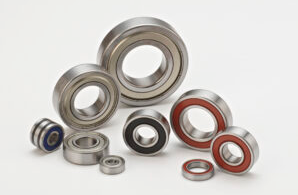Inside Look: Bearing Product Details
Explore the intricate world of bearings, focusing on their design, functionality, and the substantial benefits they bring to various applications. From their materials to the specific advantages they offer, we dive deep into the aspects that make bearings a pivotal component in machinery. This article also directs you to this page detail for a comprehensive understanding of crossed roller bearings, their unique structure, and how they stand out in the realm of mechanical components.
Types of Bearings and Their Applications
Bearings come in a myriad of types, each designed to meet the demands of different applications. From ball bearings to roller bearings, and specialized variants like crossed roller bearings, the choice depends on the required motion, load, and precision.
Ball Bearings
Used in a wide array of machinery, ball bearings are known for their ability to reduce friction and handle both radial and thrust loads efficiently. They are ideal for applications requiring high-speed rotation and low noise and vibration.
Roller Bearings
Roller bearings offer greater load-carrying capacity and higher shock resistance, making them suitable for heavy-duty applications. Within this category, cylindrical, spherical, and tapered varieties cater to specific load and alignment needs.

Crossed Roller Bearings
Crossed roller bearings provide high rigidity and accuracy, thanks to their unique design where rollers are placed crosswise. This arrangement allows them to handle loads from multiple directions simultaneously. They are particularly beneficial in precision applications such as robotics, measuring instruments, and machine tools.
Key Specifications and Performance Data
When selecting bearings, it's crucial to consider specific numbers that define their performance, including dimensions, load ratings, speed capabilities, and lifespan.
- Dimensions and Specifications: Bearings come in various sizes, from miniature bearings a few millimeters in diameter to massive ones over a meter. The size directly influences the load capacity and speed suitability of the bearing.
- Load Ratings: The dynamic and static load ratings indicate the maximum load a bearing can handle while rotating (dynamic) or at rest (static). For example, a standard ball bearing might have a dynamic load rating of 3,500 N and a static load rating of 2,500 N.
- Speed: The maximum speed of a bearing is often expressed in RPM (revolutions per minute). A high-quality ball bearing can operate at speeds up to 5,000 RPM, while specialized high-speed bearings can exceed this.
- Lifespan and Durability: Bearing life is usually calculated using the L10 life, which is the number of hours at which 90% of the bearings will still be operational under a given load. For instance, a bearing designed for industrial use might have an L10 life of 30,000 hours under standard conditions.
- Material Quality: The material of the bearing greatly affects its performance and durability. Chrome steel is commonly used for its excellent hardness and wear resistance, while stainless steel is chosen for applications requiring corrosion resistance.
- Cost and Budget Considerations: The price of bearings can vary widely based on their type, material, and precision level. A standard ball bearing might cost a few dollars, while high-precision or large-sized bearings can run into hundreds or even thousands of dollars.
Advantages and Limitations
Bearings play a crucial role in reducing friction, facilitating smooth motion, and enhancing the lifespan of machinery. They also contribute to energy efficiency by minimizing power loss due to friction. However, their performance and longevity can be limited by factors such as improper installation, inadequate lubrication, and exposure to contaminants.
In conclusion, bearings are fundamental components that support the smooth operation of virtually all machinery. By understanding their types, applications, and specifications, one can make informed decisions to optimize performance and efficiency. For detailed insights into crossed roller bearings, refer to this page detail, which provides a deep dive into their design, advantages, and application scenarios.
